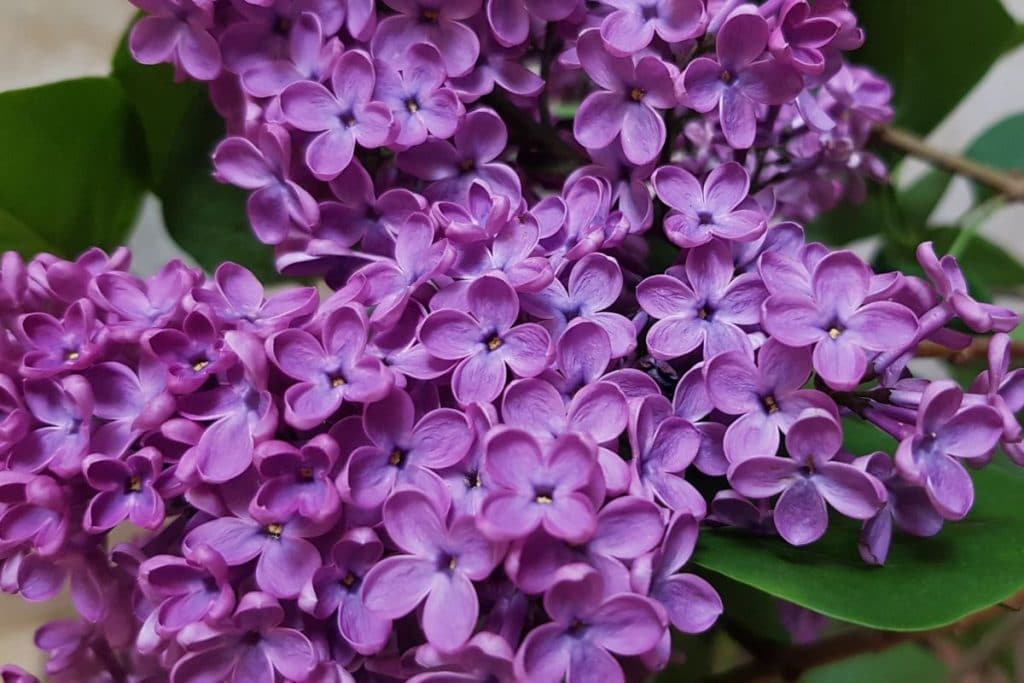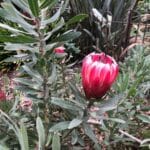A Lilac flower is also known as Syringa vulgaris, and is, in fact, a genus of at least 12 species of flowering plants that have been officially recognized.
The syringas are part of the olive family (also known as Oleaceae), and they can be found in southeast Europe, eastern Asia, and many other places that have a temperate climate.
If you have ever been next to lilac, the first thing you probably noticed was its sweet fragrance. The beauty of the flowers is also very palpable, but its scent is one of the best attributes of lilacs.
Continue reading and discover everything you need to know about Lilac’s flowers.
- Lilacs Flower Facts
- What Are The Popular Lilac Varieties?
- Common Lilac (Syringa vulgaris)
- Gloire de Versailles Lilac (Ceanothus x delileanus)
- Dwarf Korean Lilac (S. palebinina)
- Chinese Lilac (S. chinensis)
- Sensation Lilac (S. Vulgaris sensation)
- Miss Kim Lilac (Syringa pubescens Subsp. patula)
- Arroyo Grande Lilac (Ceanothus impressus var. nipponensis)
- Bloomerang Dark Purple Lilac (Syringa vulgaris)
- Lilac Souvenir de Louis Spaeth (Syringa vulgaris)
- Autumnal Blue Lilac (Ceanothus)
- Hungarian Lilac (S. Josikaea)
- Littleleaf Lilac (Syringa pubescens ssp. Microphylla 'Superba')
- Rare Types Of Lilac Flowers
- How To Grow Lilacs
- Benefits and Uses of Lilacs
- Lilac Cultural Significance
- Lilac Flower Colors and Their Meaning
- FAQs
- Conclusion
Lilacs Flower Facts
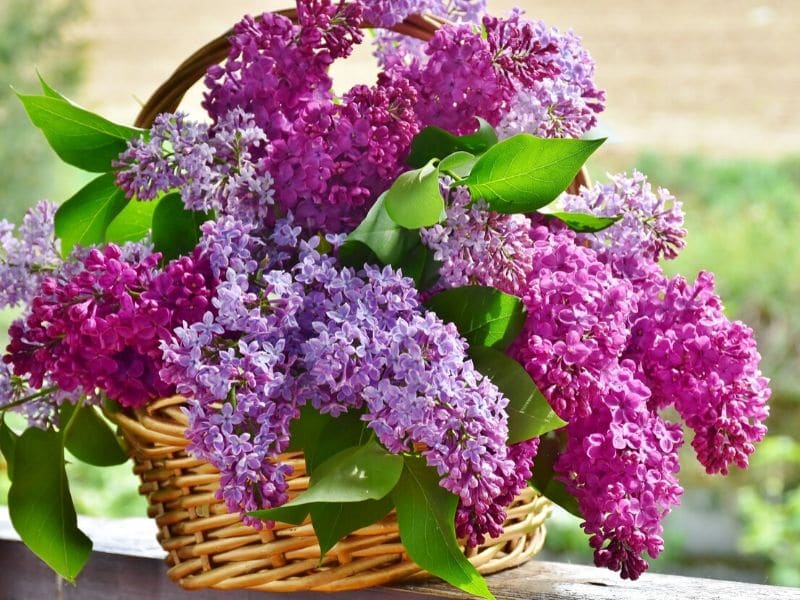
Lilacs are related to the Oleaceae family, and they have a genus of at least 20 to 25 flowering species. In addition, there are over 1,000 types of lilac bushes all over the world.
One of the great things about lilacs is that their bushes can survive hundreds of years, regardless of the local weather.
Plant Name and Origin
The genus name of a Lilac flower is Syringa and it’s derived from an Ancient Greek word: syrinx, which means ‘’pipe’’ and ‘’tube’’ (1).
The first time that this plant was officially described was in 1753 when Carl Linnaeus (a Swedish botanist and zoologist) wrote a description about it and published it in Species Plantarum (2).

However, the English word for ‘’lilac’’ comes from the French word ‘’lilac’’, and, in turn, this French word comes from the Arabic word which is ‘’lilak’’. And, ultimately, this Arabic word is believed to come from a Persian word which is ‘’nilak’’ and it means ‘’bluish’’.
These beautiful flowers have originated in Asia and Eastern Europe, hence why the name is derived from a Persian word.
Syringa vulgaris is the most common lilac and it is also the oldest lilac to be cultivated. It was brought to America in the 1700s by the earliest settlers that were coming from Europe, and people were amazing and how easy it was to cultivate them and how beautiful they smelt.
Legend has it that two of the U.S Founding Fathers, George Washington, and Thomas Jefferson, used to love lilacs. In fact, they even grew them in their gardens (3).
General Description and Characteristics of Lilacs Flowers
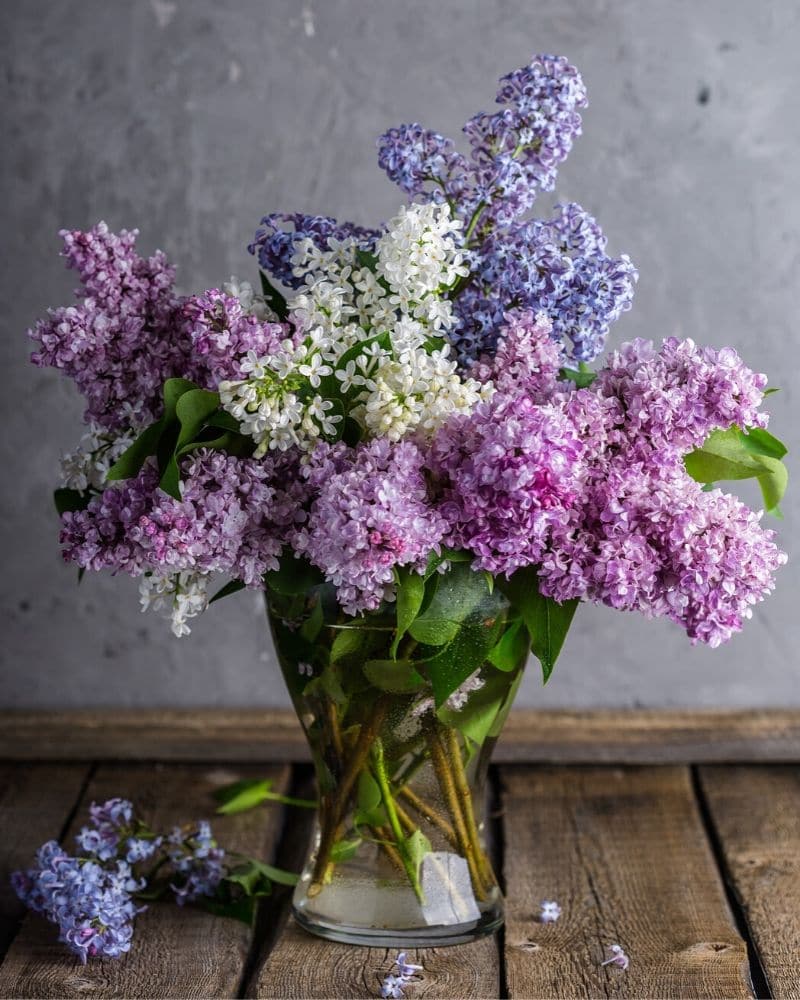
Even though the most common type of lilac is the syringa vulgaris, many other types of lilacs that exist nowadays.
In addition, some lilacs hybrids have been introduced by several people, such as Monsieur Victor Lemoine of Nancy, France. He started breeding this flower in the 1800s, and he and his nursery became famous because they developed the well-known French lilacs that have extremely fragrant double blossoms.
Other individuals also presented other types of lilacs, for example, Isabella Preston introduced later-blooming varieties that were of different colors from the usual lilac flowers.
Lilacs Flower Description
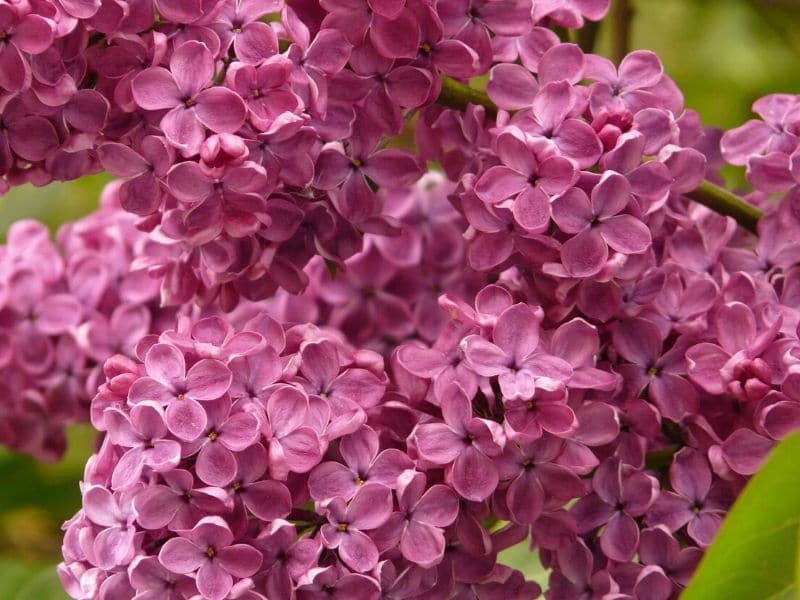
Most Lilac care is kind of easy, and butterflies often find them attractive because of their colors and scent.
Lilacs flower colors are several, such as blue, purple, lavender, yellow, white, pink, and red. Of course, it all depends on the variety of the flower, but most lilacs can grow 5 to 15 feet tall.
Usually, these beautiful blooms display four petals, but because nowadays there are many hybrid types, they have also developed some double-flowered cultivars. In other words, instead of having four petals per flower, you can see many lilacs with eight, ten or more petals.
Also, if you prune your lilac properly, then you can expect to have lilac flowers for decades.
Lilacs Leaves
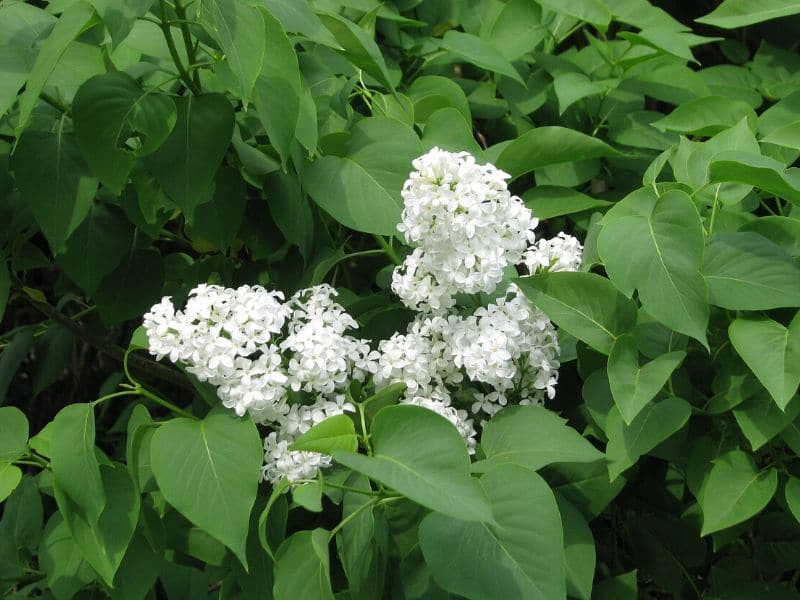
Lilac leaves have a fairly common shape, as most of them are shaped like elongated hearts. They are quite easy to spot, in all fairness.
They are also deciduous, which means that both the lilac tree and the lilac shrubs will reach their maturity and when this happens they will shed their leaves in the fall.
What Are The Popular Lilac Varieties?
Do you want to plant a lilac tree in your garden? Or are you simply learning about these flowers? Either way, here you will find 24 different types of lilacs:
Common Lilac (Syringa vulgaris)
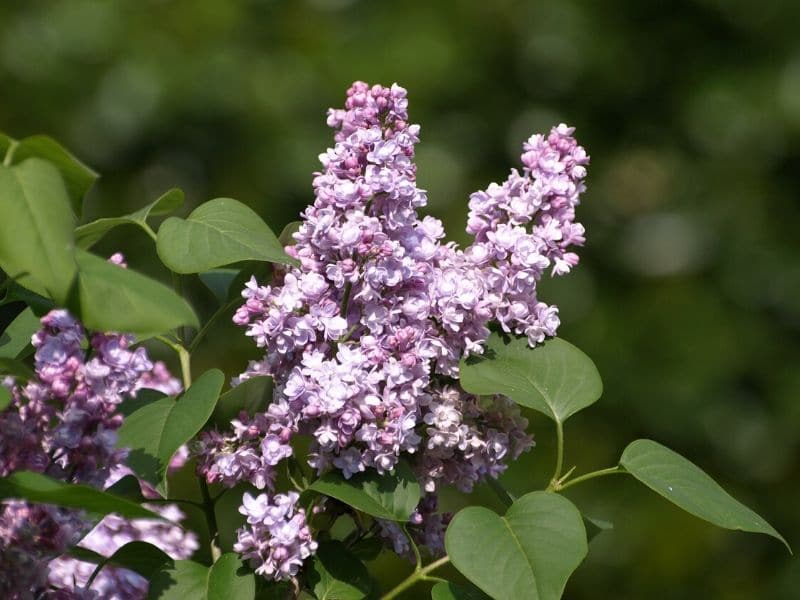
This type of lilac is the most recognized lilac of all. The flowers of this plant are lilac-colored, and they also have a strong fragrance.
They usually grow up to 20 feet in height.
Gloire de Versailles Lilac (Ceanothus x delileanus)
Even though this isn’t a rare type, the shape of this lilac is rare, in comparison to other lilacs. This flower is very round, and its petals are usually blue. It also has a very lovely fragrance.
They usually grow up to 5 feet tall, and they love the sun and well-drained soils.
Another important characteristic is that they have reddish stems. Also, after they bloom they start glowing red berries, which is why this type of lilacs has been internationally awarded at many competitions.
Dwarf Korean Lilac (S. palebinina)
Even though its name says dwarf, in reality, these lilac plants can grow up to 5 feet tall. They are not recommended to be placed in small spaces.
Their flowers are very alike to the common lilac, and they are very popular among those who only just started their gardening journey because they are very easy to plant and maintain.
These dwarf varieties have pink-lavender flowers.
Chinese Lilac (S. chinensis)
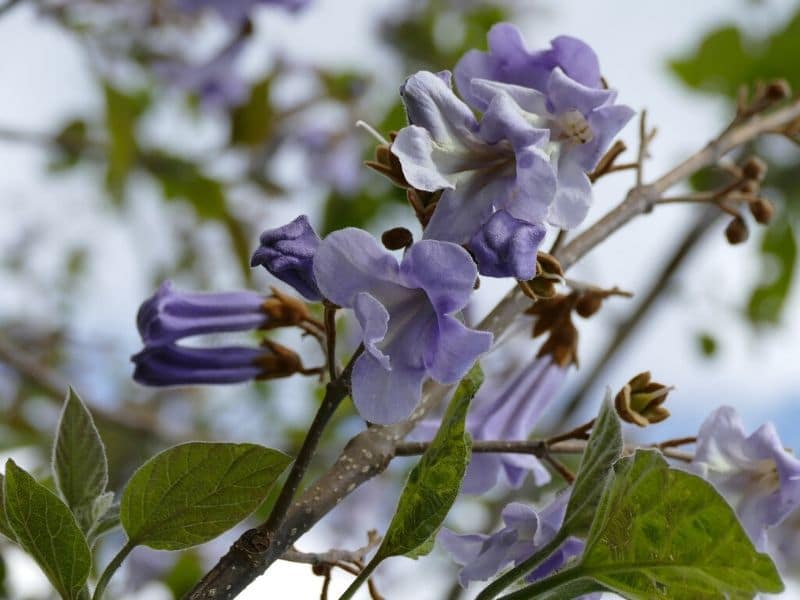
This type of lilac grows quickly, and it can easily reach 8 to 12 feet in height. Also, this type of bush is a cross between Persian lilacs and common lilacs, making this tree and flower truly beautiful.
It has a lilac-pink color, and sometimes it can grow a purple color as well.
Sensation Lilac (S. Vulgaris sensation)
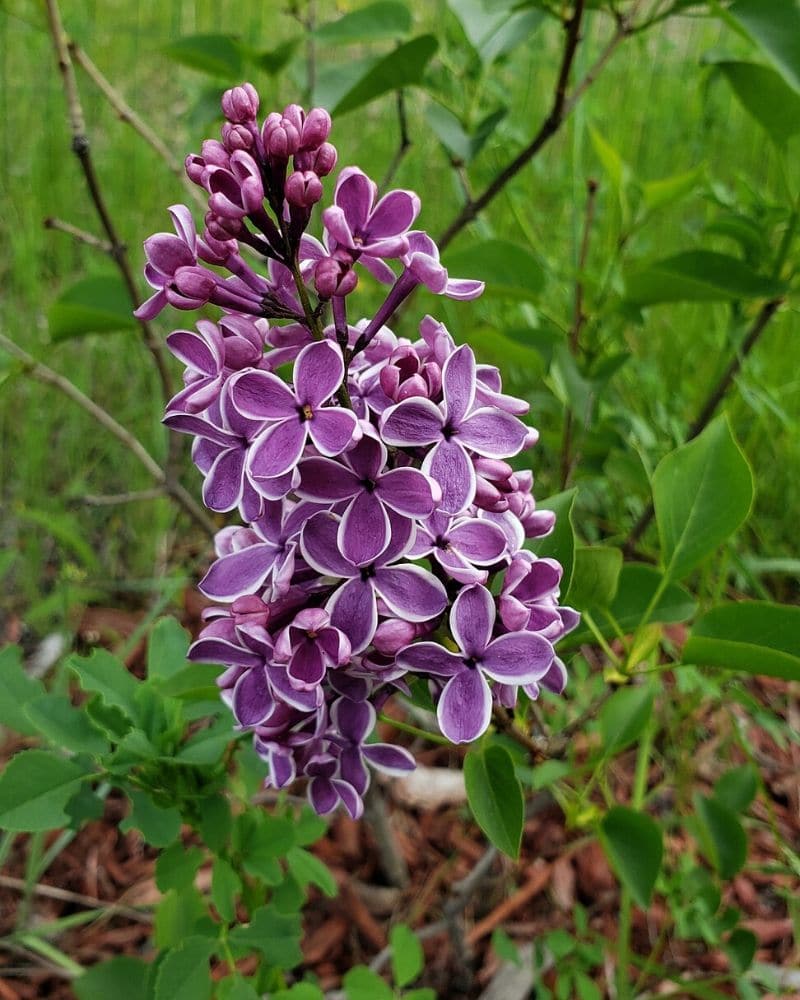
They can grow up to 15 feet. They have bi-color flowers that truly cause a sensation. It is a great flower to have, especially if you would like to welcome butterflies into your garden.
It can reach 15 feet in height and its fragrance is quite nice and not too strong.
Miss Kim Lilac (Syringa pubescens Subsp. patula)
These types of flowers will definitely let you know that spring has arrived. The shrubs can grow up to 6 feet in height, and they are very tolerant of different weather.
It has deep purple buds and the petals are sometimes lavender or light blue. Birds and butterflies love them, and it is perfect for small gardens.
Arroyo Grande Lilac (Ceanothus impressus var. nipponensis)
It can reach up to eight feet high, and it is a stunning type of lilac. It has dark blue flowers and its stems are often dark brown.
It is a good type of lilac if you live in really dry areas, but during the first couple of years of its life, you must water it constantly.
It is also very fragrant and it loves sandy soil, so it grows really well in coastal gardens.
Bloomerang Dark Purple Lilac (Syringa vulgaris)
It can grow up to six feet tall, and its flowers start blooming during mid to late spring. What is unusual about this type of plant, is that it also blooms during the summer and fall.
It forms beautiful flowers with lavender petals.
Lilac Souvenir de Louis Spaeth (Syringa vulgaris)
This type of lilac attracts butterflies and hummingbirds alike, but it also seems to distract deers and rabbits.
It likes to be cool, so try to avoid planting it in very hot areas. Also, it can reach up to 12 feet in height, even though it is a shrub.
Autumnal Blue Lilac (Ceanothus)
As its name suggests, this type of flower is blue, and it is absolutely breathtaking to see one and to smell one.
Its leaves are very bright, and it can grow up to 10 feet high. It is a unique flower, thus this has won several international awards.
Hungarian Lilac (S. Josikaea)
It is another type of compact lilac. It usually has dark flowers, and they are very common in the U.S.
They are interesting and unique mainly because they love harsh weather such as the late winter.
In fact, they need freezing temperatures in order to start breaking away and produce flowers.
Littleleaf Lilac (Syringa pubescens ssp. Microphylla ‘Superba’)
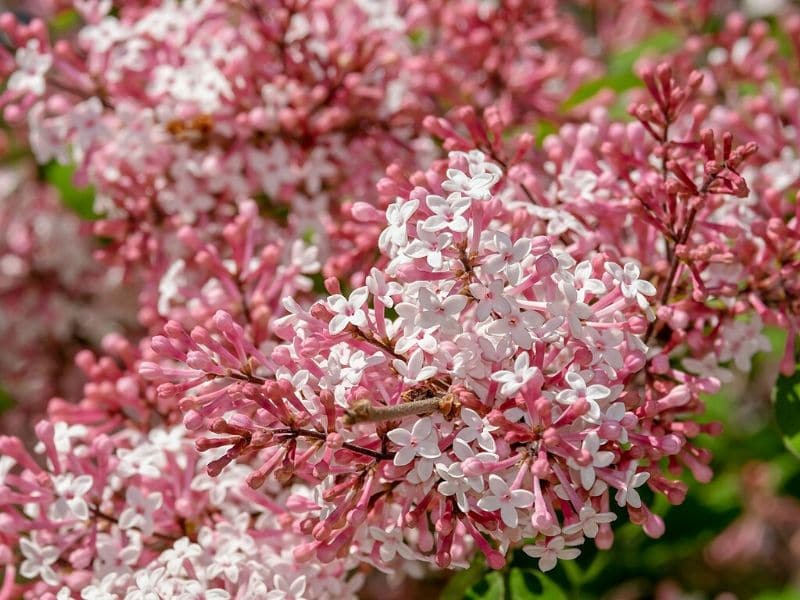
They are very petite and have petite leaves as well. Littleleaf Lilacs will usually only grow up to 5 feet tall.
They also have a rosy-pink flower that is very different from the rest of the lilacs flowers. Reblooming lilacs will be possible if the conditions have been set properly. This means that these pink flowers must be in mild summer temperature, and they need to be watered constantly.
Rare Types Of Lilac Flowers
Japanese tree Lilac (S. amurensis ‘Japonica’)
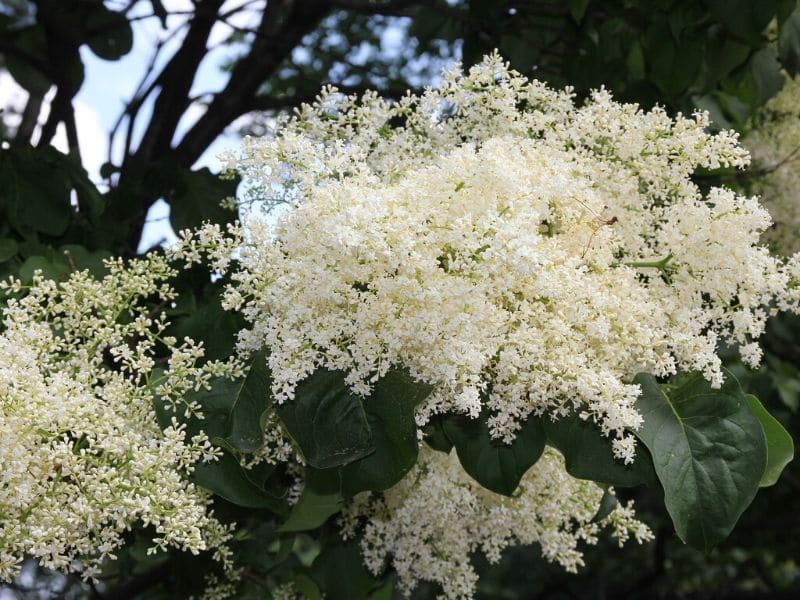
Even though lilacs grow in different countries (such as Japan, Korea, and Northern China), these types of lilacs are considered rare because of the colors of the flowers.
These lilacs are yellow, but a very pale yellow in comparison to other types of lilacs.
They also have a strong fragrance, and they tend to grow up to 39 feet high! This is why it’s considered the largest lilac.
Dark Star Lilac (Ceanothus)
This is another unique type of lilac. Its flowers are dark blue in color and its leaves are dark green. But, the interesting thing about them is that the leaves are tiny and you are able to see the veins.
It can grow up to six feet tall and it must be pruned annually. The Dark Star lilac loves hot summers and water.
Syringa pinetorum Lilac
It is a very rare type of lilac that can only be found in China and Tibet. Pinetorum refers to the pine trees or pine woods, and this shrub can reach up to less than five feet tall once it reaches its full maturity (4).
The little clusters of single or double flowers can be found in a variety of white, purple, lavender, pink, or blue colors.
How To Grow Lilacs
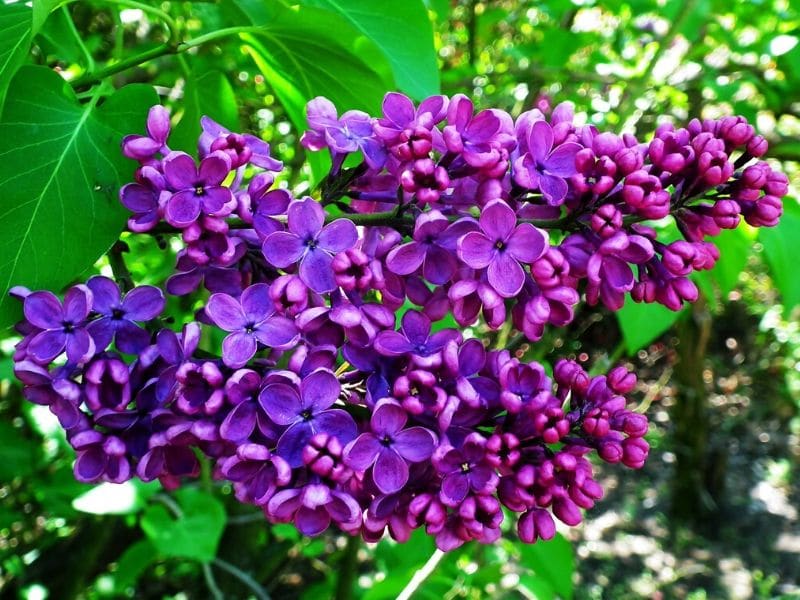
Growing lilacs is not as difficult as you may think. You will first need to choose a site to grow your lilacs. This site must have full sun but it also needs to be a moist and well-drained soil.
Below are some specific instructions and guidelines to follow, for whenever you choose to grow your own lilacs.
Location is Everything
The area you choose to grow your lilacs must be fertile, well-drained, and, if possible, neutral soil to slightly alkaline soil.
Also, remember that lilacs need to be exposed to sunlight, so try to plant your lilacs in an open area (6).
Water
Water is essential for any plant, especially during the growing season of lilacs. However, you will also need a good drainage system if you are planting the flowers in your garden.
With a drainage system, you will only use the necessary amount of water, and all the extra water can simply go away and be used for something else.
Mature plants often only require irrigation during times of drought. And even though lilacs love water, you also need to make sure you don’t water lilacs too much.
Soil
If you can, run a simple test and see what the results tell you about your soil. The optimal pH level should be near 7.0. But don’t stress about it either, because there are many ways to help your soil get in the best condition.
Lilacs tolerate a variety of soil types but prefer well-drained, humus rich soil. And, if on the other hand, you have problems with your soil as it becomes acidic, try adding garden lime to it and you will soon recover the soil alkaline levels.
Some established plants survive in clay soil; however, it may limit their development.
When choosing lilac companion plants, you need to make sure those companions have similar growing conditions, especially soil requirements.
Plant your Lilacs
Once you are ready to plant lilacs, make sure you make a big hole so your plant has enough space to grow. You then place your lilac bush and immediately start filling the rest of the hole with soil.
Make sure you water it as well, especially during the day you plant it. If you live in a place with dry weather, then you should also water it constantly.
If you are lucky enough to have several lilac plants then try to place them between 5 and 15 feet apart from each other. It will all depend on the variety of plants you have, but make sure you leave enough room for them to fully grow and blossom.
Care and Maintenance
Pay close attention to your lilacs but try not to stress about it! Each spring you can put compost under your plant and, at the same time, you can place a 2-inch layer of mulch. This will help you to retain moisture and to control weeds that may damage your lilacs.
If your summers are very hot then you must water your lilacs.
Even though lilac trees require maintenance, it can be argued that this is a simple step to make sure your plants will grow properly.
Lilacs are well-known for enduring droughts and severe weather, and they actually survive.
After three years, you will be able to see your lilacs producing fragrant flowers.
Deadheading
Deadheading, or removing spent blooms, should be done as soon as the flowers fade. It should also be done annually in order to maintain the health of the lilacs.
Just make sure you cut the old flower and its cluster at its base, this way you are making space for new shoots to grow over the following late summer.
Pests and Diseases
Lilac flowers can face threats from aphids, which distort leaves by sucking sap, and lilac borers, whose larvae cause wilting and dieback. Scale insects can attach to branches, while powdery mildew appears as a white powder on leaves. Affected branches can be infested with scale insects.
Fungal diseases such as leaf spot and verticillium wilt can also affect lilac flowers.
Bacterial blight causes dark spots and leaf drop, and lilac rust exhibits as orange pustules. Prune and dispose of infected parts promptly, enhance good air circulation, and use insecticidal soaps or fungicides when necessary.
Regular monitoring, good garden hygiene, and appropriate preventive measures help maintain the health and beauty of lilac flowers, ensuring they flourish despite potential pests and diseases.
Pruning Lilacs
Annual pruning is essential for lilacs in order to stimulate flowering and guarantee air circulation, which helps to prevent powdery mildew and other issues.
Because lilacs bloom on old wood, pruning should be done shortly after blooming is over.
When your plant is small, and if it has flower heads then try to cut them within the first month of their first appearance.
Once you do this, you will soon realize that your plant will focus on preparing itself to produce more flower buds, which, in turn, will also help the overall well-being of the lilac plant.
If you think your lilac shrub is becoming too tall, then you can also cut some branches. If, on the other hand, your branches are short, you can cut 10 to 15 inches of the main stems from the soil, and this will help your branches grow.
Propagate
To propagate lilacs, you can use the shoots or suckers that grow from the roots of existing plants. These new stems can be cut from the plant using a sharp shovel and replanted in a container filled with damp potting soil or directly in garden soil.
Propagating lilacs from shoots is a relatively easy process that can help you get clones of your favorite lilac variety for free. The ideal time for propagation is in the late spring or early summer when the soil is moist.
Benefits and Uses of Lilacs
Lilacs have many usages, and they also have a lot of benefits for your health. They are the following:
Medicinal Uses
Aromatherapy
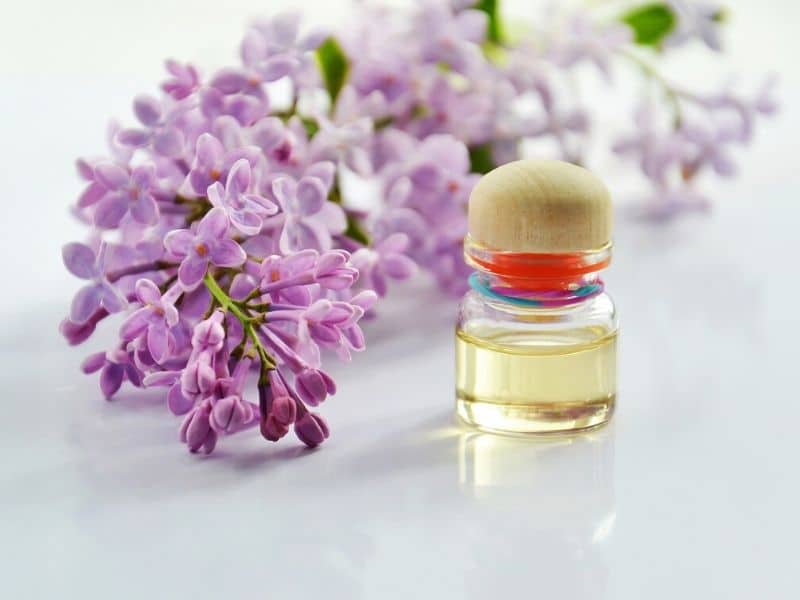
Lilacs are very fragrant, and this means that lilac oil is going to be amazing as well. In fact, this type of oil is aromatherapeutic, which means that it has health benefits as well.
For example, lilac oil can be used to help reduce depression and anxiety. It can also help you to feel relaxed and in a good comfort zone.
Medicinal Use
Not many people are aware of this, but lilacs have been used for centuries as a treatment for fever, inflammation and even malaria (7).
It also is a vermifuge, which means it will help you with any possible threats for intestinal worms.
In addition, lilacs’ oil can help with any skin problems or even minor injuries. Lilac oil is widely used to recover from different diseases. Also, this oil can help you with sunburn, scrapes and many other skin conditions.
Fragrance Uses
Lilacs are known for their beautiful scent, so, it isn’t a surprise that some of the best perfumes in the world use these types of flowers.
However, you can also use them to make your home smell better, especially in the washroom. Or you can place some lilacs in your bathtub and have a relaxing and refreshing bath.
Culinary Uses
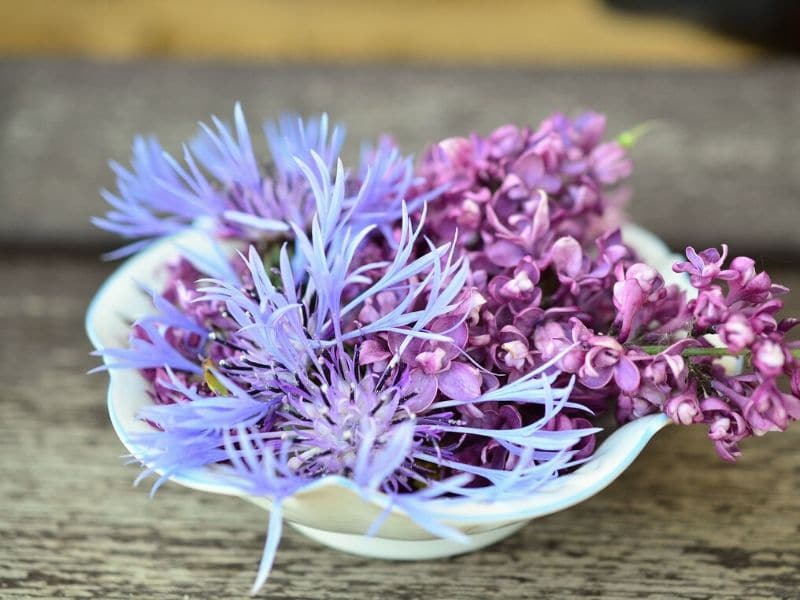
You may be surprised, but did you know that lilacs can be used as a culinary ingredient? From crystallizing them to be served as a decorative item in either cake, cookies, rice dishes, or even pasta, to making a lilac syrup, you can definitely use your lilacs in the kitchen (8).
Other Uses
As a Way to Attract Animals
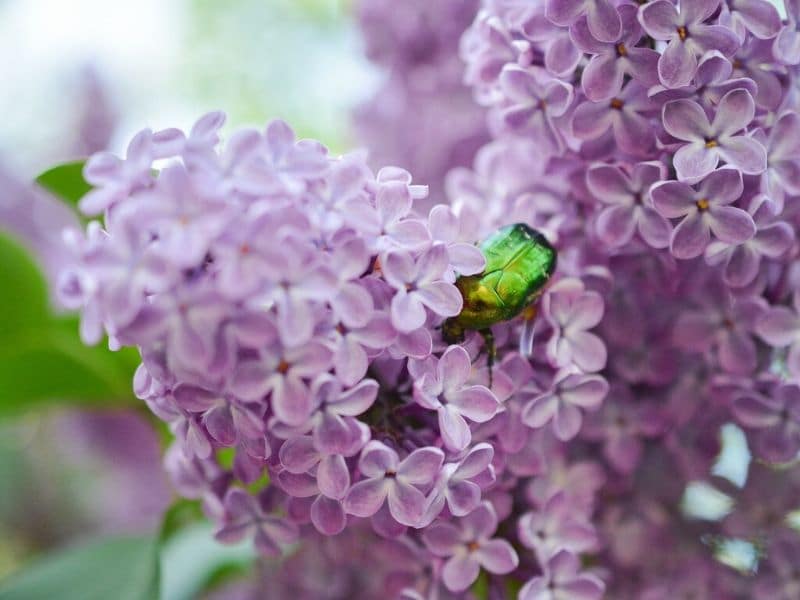
If you would like to attract animals to your garden, then why don’t you plant lilac bushes?
Because of their fragrance, lilacs like to lure birds which, in turn, feel attracted to the possibility of creating more nests nearby these plants.
Also, butterflies love lilacs, and they actively help to pollinate other garden plants that you may have.
Lastly, lilacs could be used as distracting tools, especially if you have deer nearby.
As a Decorative Flower
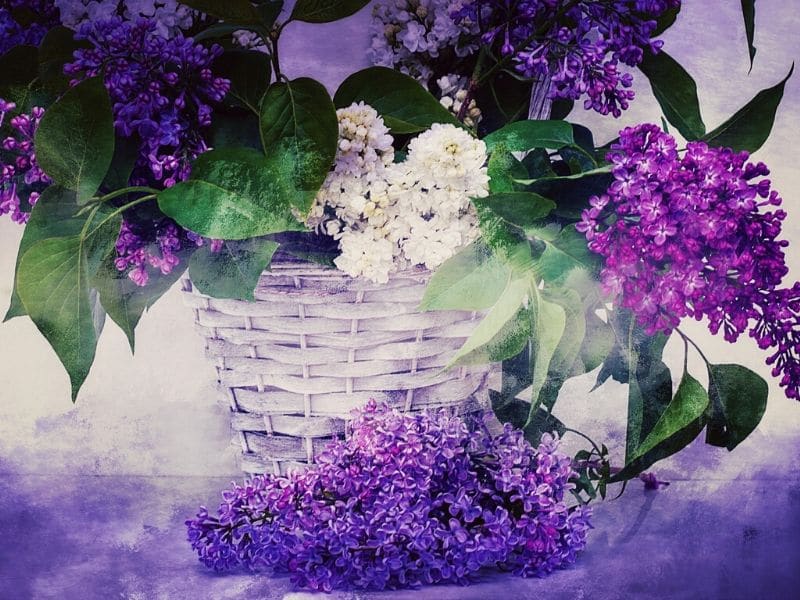
Since lilacs come in different colors, shapes, and scents, they can be used as decorative flowers. Place them in any area of your house, and your home will not only look better, but it will smell great as well.
You can also give them as a present to your favorite person, and they will look great if you have many types. Just mix and match them and you will have a perfect gift.
Lilac Cultural Significance
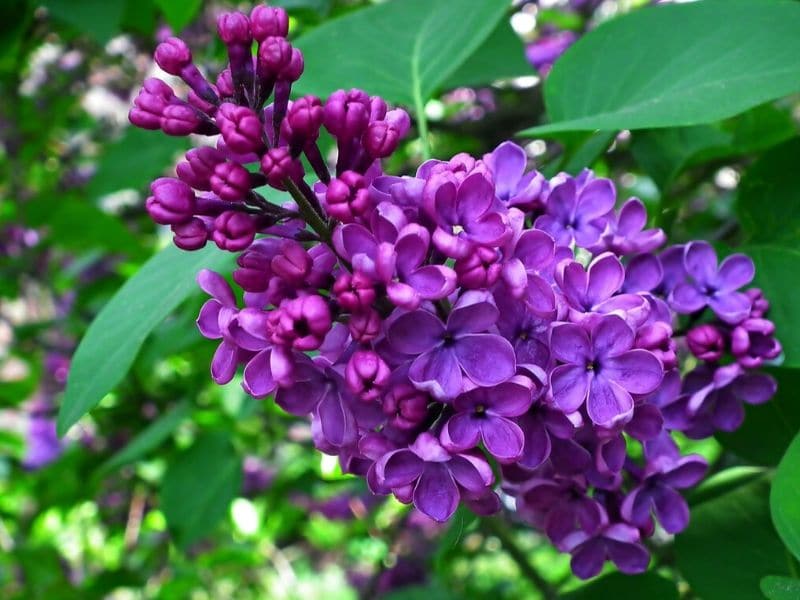
Even though lilacs originated in Asia and Southeastern Europe, it can be argued that they also became quite a popular plant in many areas of the world.
This is why in several countries, lilacs are associated with the Easter holiday, as this holiday tends to occur during the blossoming of the flowers as well. What’s more, for many people this symbolizes a new beginning.
Furthermore, different cultures have also given lilacs different symbolism. During the Victorian era, many people thought lilacs were a reminder of an old love. The Celtics saw lilacs as magical plants, mainly due to its fragrance.
In Russia, there is a tradition where the family of a newborn puts a lilac flower over the head of the baby, in order to attract wisdom to the child. And in the United States, lilac flowers are the official state flowers in New Hampshire.
Lilac Flower Colors and Their Meaning
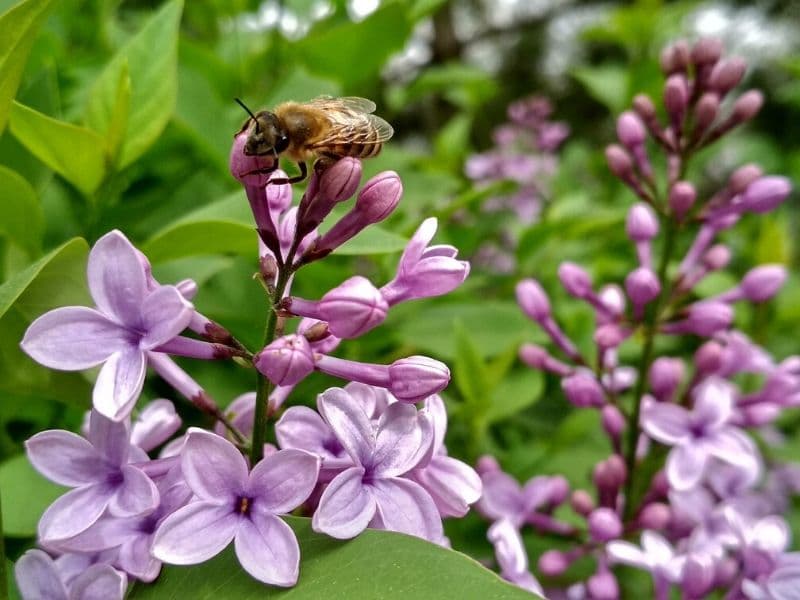
Lilac flowers bloom earlier than most others, so they tend to symbolize renewal. Also, individuals from all over the world believe that lilacs also symbolize confidence, so in many areas, there is a tradition to gift lilacs when a person is about to graduate or when they are getting married.
There are also specific meanings that can be attached to specific colors. For example, magenta lilacs can symbolize love and passion, whereas blue lilacs are considered to bring happiness and tranquility.
In addition, violet lilacs symbolize spirituality, and white flowers signify purity and innocence. And, lilac, which is the color for which they named the flower, is of a light purple tone that symbolizes the first love.
To learn more in details, check our Lilac Flower Meaning and Symbolism article.
FAQs
Are lilacs easy to take care of?
Yes, Lilacs are generally considered easy to care for. They thrive in well-drained soil and prefer full sunlight. Once established, they are relatively low-maintenance.
How do you keep lilacs blooming?
To keep lilacs blooming, prune lilacs immediately after flowering to encourage new growth. Provide adequate sunlight, proper spacing, and regular watering. Applying a balanced fertilizer in early spring can also support blooming.
Why do lilacs stop blooming?
Lilacs may stop blooming due to factors such as inadequate direct sunlight, improper pruning, overcrowding, or disease. Over-pruning, particularly removing buds inadvertently, can also affect blooming. Ensuring proper care and addressing any environmental issues can help restore blooming.
How long do lilac flowers last?
Lilac flowers typically last for about 2 to 3 weeks, depending on the specific variety and environmental conditions. Enjoy the fragrant blooms while they are present and consider pruning after flowering to set the stage for the next season’s blooms.
Conclusion
Lilacs are so beautiful and amazing that they can help you feel refreshed as soon as you smell them. To some, lilacs fragrance is a natural treasure, and it’s incredible how different types of lilacs will provide different types of odors.
As we have seen, there are many varieties of Lilac trees in the world, and even though many individuals don’t know whether lilacs are trees or shrubs, the main thing you have to keep in mind is that trees become taller and the shrubs look like, well, shrubs or little bushes.
With consistent care and a little patience, your lilacs will reward you with years of breathtaking blooms and intoxicating fragrance. Remember, lilac flower care isn’t complicated, but it does require some key practices.
Proper watering, regular pruning, and addressing potential pests will keep your deciduous shrubs healthy and vibrant. By following these simple guidelines, you can ensure your lilacs become a cherished focal point in your garden, filling it with color and captivating scent for seasons to come.
For more amazing flowers to see, check the California lilac and our list of flower names from A to Z.
References
Reference List:
(1) https://www.arboretum.harvard.edu/plants/featured-plants/lilacs/
(2) https://www.biodiversitylibrary.org/item/84235#page/5/mode/1up
(4) Su, G., Cao, Y., Li, C., Yu, X., Gao, X., Tu, P., & Chai, X. (2015). Phytochemical and pharmacological progress on the genus Syringa. Chemistry Central Journal, 9(1), 2. https://doi.org/10.1186/s13065-015-0079-2
(5) https://npgsweb.ars-grin.gov/gringlobal/taxonomydetail.aspx?id=36093
(6) https://www.arboretum.harvard.edu/plants/featured-plants/lilacs/how-to-plant-and-care-for-lilacs/
(7) Woźniak, M., Michalak, B., Wyszomierska, J., Dudek, M. K., & Kiss, A. K. (2018). Effects of Phytochemically Characterized Extracts From Syringa vulgaris and Isolated Secoiridoids on Mediators of Inflammation in a Human Neutrophil Model. Frontiers in pharmacology, 9, 349. https://doi.org/10.3389/fphar.2018.00349
(8) Sõukand, R., Hrynevich, Y., Vasilyeva, I., Prakofjewa, J., Vnukovich, Y., Paciupa, J., Hlushko, A., Knureva, Y., Litvinava, Y., Vyskvarka, S., Silivonchyk, H., Paulava, A., Kõiva, M., & Kalle, R. (2017). Multi-functionality of the few: current and past uses of wild plants for food and healing in Liubań region, Belarus. Journal of ethnobiology and ethnomedicine, 13(1), 10. https://doi.org/10.1186/s13002-017-0139-x
Close
*Featured Photo by Ninelro/depositphotos

